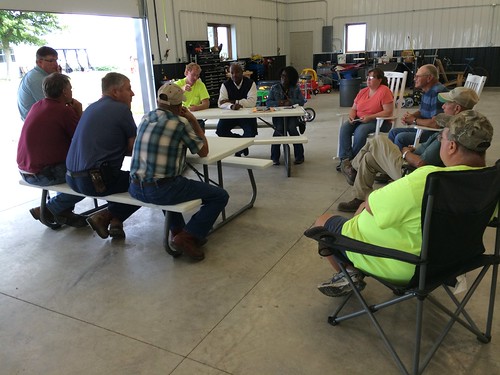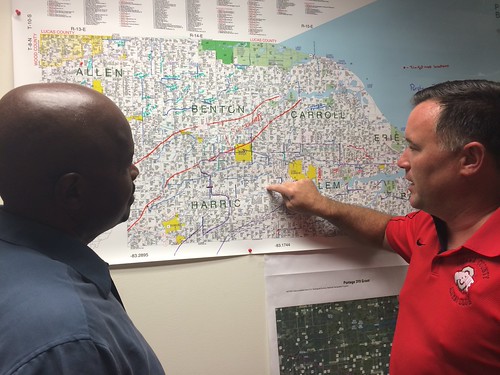
As Mark Twain once said, “Let us make a special effort to stop communicating with each other, so we can have some conversation.” Recently, in Ohio, the staff of USDA’s Natural Resources Conservation Service (NRCS), put that advice to work: rather than trying to communicate broadly, they took their message on the road, visiting with farmers face-to-face to talk about the importance of cover crops on improving water quality.
For two days this past summer, 400,000 Toledo, Ohio residents dependent on safe drinking water from Lake Erie could not use their water for drinking, bathing or washing. Toxins from algae contaminated their water, exceeding the city’s water treatment facilities capacity to remove it. Boiling the water only concentrated the toxin. No one knew how long this would last.
Runoff from 4.5 million acres of land, primarily farmland, drains from the Western Lake Erie Watershed into Lake Erie. Phosphorus used to fertilize farm fields may run off if applied before a heavy rain, eventually reaching Lake Erie, providing a feast for algae. The trick is to keep the phosphorus in place.
NRCS knew the agency had to act immediately in the face of this crisis. NRCS offers professional conservation expertise and financial incentives to farmers who implement conservation practices on the ground to help keep soil and phosphorus out of drainage water.
The NRCS team in Ohio decided that planting cover crops would provide the most effective and immediate conservation protection for Lake Erie. Cover crops can keep soil in place and take up phosphorus. Funds from the Environmental Quality Incentives Program, or EQIP, would help farmer’s purchase and plant cover crop seeds.
But the window to plant cover crops was closing fast so the team needed to get the word out quickly. Face-to-face communication takes the most time and effort, but it’s very effective. Knowing this, NRCS conservationists hit the road. It was time to have conversations.

Over the next seven weeks, NRCS conservationists traveled to farms and had conversations with farmers in 10 of the watershed’s 20 Ohio counties. After the first few meetings, the team realized that the farmers knew about the EQIP cover crop idea before the team arrived! At every meeting, the farmers shared with NRCS suggestions and information which the team used to create a more effective cover crop program in an effort to protect Lake Erie from runoff.
Twitter played an unexpected role in spreading the word of the proposed cover crop program. Agri-businesses, organizations, and media “retweeted” the teams’ photos and comments from farmers posted on Twitter, informing people far beyond the borders of Ohio about the crisis response. Within the first two weeks, followers of NRCS Ohio’s Twitter account increased 25 percent.
The team’s communication work culminated in a press conference announcing a $2 million available to plant cover crops through EQIP. NRCS produced and published a number of communications products to get the word out. Partners also promoted the effort.
The farmer conversations created a media buzz focusing on farmers working toward solutions, rather than blaming them for the problem. The success of this intensive communication effort is in the numbers – more than 450 EQIP applications submitted by farmers in the Lake Erie watershed offering to plant cover crops on 86,000 acres!
As cover crop planting commenced, the NRCS team shared the story of their successful crisis response strategy and discussed future conservation efforts at press conferences, on expert panel broadcasts, and at the Great Lakes Mayors Summit in Chicago. The team continued traveling to watershed farms to attend meetings with farmers to learn what worked and what didn’t with the cover crop program and to discuss the future of Lake Erie watershed conservation efforts.
NRCS and farmers wrapped up their response effort where it began, on Jerry McBride’s farm in Hardin County. The financial cooperative, Ag Credit, and NRCS started a new partnership during the crisis to create and distribute 500 cover crop signs. These signs, posted along roads bordering cover crop fields, will help people identify cover crops and show that farmers have taken action. Jerry McBride posted the first sign.

